Volkswagen Arteon R | PH Used Buying Guide
Safe, fast, huge - so what's not to like?

Key considerations
- Available for £25,000
- 2.0-litre inline-four petrol turbo, all-wheel drive
- Easy mid- to high-four-second 0-62mph times
- Smart diffs front and rear make handling sharp and safe
- Short production run so quite rare
- Handsome, fun, family-friendly transport
On the launch in 2020 Volkswagen’s PR department described the MQB-platformed Arteon R four-door liftback fastback sports coupe (take your pick) and Arteon R Shooting Brake as a ‘fusion of gran turismo and sports car’ and ‘the most powerful models in the avant-garde business class’, whatever that was. The estate was also hailed as the most powerful VW wagon ever.
For some the R was a disappointment because about three years earlier all the chat had been about an all-new 400hp 3.0 litre turbocharged VR6 engine. That got the VW fanbase weak at the knees with excitement, but once the reality of emissions had reared its ugly head the production car ended up with the same EA888 2.0 turbo four petrol engine as the Mk 8 Golf R, with the same 320hp/310lb ft rating. The Arteon R also had 4MOTION all-wheel drive, a 7-speed dual-clutch auto box configured for faster ‘R’ type shifting and an R Performance torque vectoring rear axle with the potential to route 100 percent of the power to either of the rear wheels. Even without the VR6 the Arteon R package sounded the business, avant-garde or otherwise.
Beauty is in the eye of the beholder, so they say. Volkswagen hadn’t exactly been setting the world alight on that score before the Arteon came along but even the most churlish VW-haters had to admit that the Arteon in general, the R in particular, and the Shooting Brake in double particular was a good looking car. Some thought Arteons looked like blobs, but we’re going to go out on a limb here and say that those folk were in the minority. The choice between the two body styles could be more or less entirely based on whichever one you preferred to look at because the estate’s cargo area with the seats up was only 2 litres larger than the saloon’s (565 litres versus 563 litres). The estate did have 85 litres more space when the seats were down, but with 1,557 litres on tap the liftback wasn’t exactly poky.
It was a quick car too. The official 0-62mph claim for the saloon was 4.9 seconds. At 1,735kg the Shooting Brake was only around 15kg heavier than the fastback/liftback/whatever, so in performance terms there was very little between them. DCC adaptive suspension was standard on the R, along with a 20mm-lowered and stiffened stance and bigger brakes.

With the benefit of hindsight and the realisation that we don’t all do 52 trackdays a year maybe it’s time to look at the Arteon R in a more kindly light. It was one of those cars that scored big points in real world motoring. Our Matt reckoned it was the ideal vehicle to find yourself in when it was dark, wet and late, you were 150 miles from home and three junctions of the A11 were closed. It scored extra points for having proper physical controls for major functions, items that were become noticeable for their absence in an increasing number of VWs.
With such an attractive package of performance, practicality and (some would say) style going for them, it was a shame that Arteon R production was so short. Six years after the Arteon had taken up where the Passat CC left off, and just two years after the R models had appeared on UK roads, poor sales finally convinced Volkswagen that it was better off staying away from the luxury end of the market and concentrating instead on the volume sales that made its name.
The Shooting Brake was supposed to have been given a stay of execution until 2026, but in fact the only ‘new’ – meaning 2023 – Arteon R you can buy today (Oct ’24) from a few UK dealers will be ‘stock only’. Trying to negotiate VW UK’s website is a bit like finding your way through the Hampton Court maze after six pints of Old Dirigible ale, but at the time of writing it seemed there were seven Arteon R liftbacks and one estate showing up in the UK stock list, at what looked like a going rate of £60,390 for the liftback and £62,545 for the estate.
One liftback, presumably loaded with extras that we can only imagine, was up for nearly £67,000. They might have a job shifting that one in light of the fact that you can pick up a three-year old mid-mileage car for well under £30k. And you don’t have to lay out that amount either. The lowest priced Arteon R we found in the UK in October 2024 was a 2021 Shooting Brake priced at £25,000. Admittedly that one had breezed past the 70,000 mile mark but you couldn’t tell that from the condition, which looked very good indeed. In a world where the cheapest new VW, a basic Polo, costs nearly £21,000, an Arteon R for just £4k more than that sounds like good value. Is it, though?
SPECIFICATION | Volkswagen Arteon R (2021-23)
Engine: 1,984cc inline four turbocharged petrol
Transmission: 7-speed dual clutch auto, all-wheel drive
Power (hp): 320@5,350-6,500rpm
Torque (lb ft): 310@2,000-5,350rpm
0-62mph (secs): 4.9
Top speed (mph): 155
Weight (kg): 1,720
MPG (official combined): 31.7-33.2
CO2 (g/km): 199
Wheels (in): 8 x 18
Tyres: 245/45
On sale: 2021-23
Price new: £51,600 (£52,400 Shooting Brake)
Price now: from £25,000
Note for reference: car weight and power data is hard to pin down with absolute certainty. For consistency, we use the same source for all our guides. We hope the data we use is right more often than it’s wrong. Our advice is to treat it as relative rather than definitive.

ENGINE & GEARBOX
Although the direct-injection, variable valve-timed, 2.0 TSI four was never going to have the six-pot panache of a 340 or 440 BMW it was still the most powerful EA888 you could buy, which was worth something. The most powerful Arteon you couldn’t buy would have been one of a handful of W12-engined Arteons that were reportedly built to reward long-serving Volkswagen staff.
The EA888 sounded eager enough through the R’s quad trapezoidal tailpipes attached to proper back boxes. Volume/chuffing adjustability was built in through the various driving modes and the electronic sound augmentation could be sidestepped by selecting Pure sound.
What could go wrong with the EA888? Not a lot by this stage of its development. Turbo units could fail and fuel injectors might deteriorate through heat, causing poor running. The water pump was made of plastic, which experience indicates is rarely a good choice of material for this item. There’s not much evidence of it having been a problem with Arteon Rs so far though, but they are relatively new cars still so this could be an issue for the future if heat soak happens. A recall was issued in April 2022 to replace engine covers that were coming into contact with the turbocharger, leading to melting in some cases and a pretty awful pong.

The DQ500 gearbox, as seen in the Audi RS3, the odd diesel Tiguan and some Transporter vans, was the strongest version of VW’s DSG transmission. It was better on upshifts than downshifts, it automatically upshifted near the red line even if you were in manual mode, and if you put it into an unsporty mode it could sometimes feel like the whole gearbox had gone on holiday, with gears either being jumped or not picked up on kickdown. A software update improved matters for most owners. With or without these glitches the car was very well suited to the sort of motorway cruising that most would be buying it for. The rev hang that was a notable feature of the engine in this application (there was no soft limiter, oddly) undoubtedly helped it in that respect.
Even in its sportier settings the engine understandably didn’t feel as sprightly as it did in the 200kg lighter Golf R, but the stopwatch tells a different story. Thanks to the 4MOTION system it could reliably and repeatedly deliver the official four-second 0-62mph times more or less irrespective of conditions. Testers were easily managing to knock off the slightly shorter 0-60mph run in 4.5 seconds simply by engaging launch control and hoofing the loud pedal. Hookup off the line was instant and fuss-free.
You could reasonably expect to average at least 30mpg (not far off the official combined figure) in mixed use. Both models could tow up to 2.2 tonnes on a braked trailer. The R qualifies for VW’s 2.0 litres or under ‘All-in’ service plan for cars aged between 3 and 6 years old. That includes two services, two MOT tests, two years’ roadside assistance and up to two years warranty at a cost of £37.50 a month.

CHASSIS
Between 50 and 100 per cent of the Arteon R’s drive went to the front axle and up to 50 per cent to the rear, where the Magna-supplied electronically-controlled twin-clutch rear diff lurked. This torque vectoring system meant that all of the back-axle torque was permitted to go to the wheel on the outside of the curve. An electronic XDS diff lock on the front axle applied light braking pressure to the unloaded front wheel, adding an extra layer of security.
It worked very nicely. To quote VW Motorsport racing driver and track legend Hans Stuck ‘you could take fast bends on the motorway with a great deal of precision… the vehicle doesn’t budge’. Yes, you wouldn’t expect him to say it handled like a Trabant with knackered shocks and Lingalonga Ditchfinder tyres but these guys do have reputations to think of and we feel comfortable about reproducing his view here.
There were four driving modes: Comfort, Sport (which was the default profile), Individual (which was configurable) and Race, which was exclusive to R models. In Comfort mode the R was practically as easy-riding as a normal Arteon. Even in Race mode it wasn’t an eyeball-rattler on rubbish UK roads. The DCC chassis control electronics and the Vehicle Dynamics Manager gave you 15 different damper settings and provided a good moment-to-moment mix of comfort and control for any given road surface. You could fully disable the stability control knowing it would come back online to bale you out in an emergency.
Standard R wheels were 18-inch Sebrings with R-specific Pirelli 245/45 tyres but you could go up to Golf R-type Estoril rims in a 20-inch diameter wearing 245/35 tyres. Choosing that setup unlocked the boss level option of a 168mph maximum speed. The brakes were Golf R 357mm discs at the front and 310mm at the back. They were very effective in the Arteon R.
There was a recall on certain Arteon models in September 2021 to rectify a potentially loose pressure input rod connection on the brake booster but we don’t believe that the R was part of that shout-out. Same goes for an incorrectly calibrated tyre pressure monitoring system that was addressed in April 2021.

BODYWORK
Blue is the signature ‘R’ colour for VW. If you don’t consider body paint variations of black and white to be actual colours, the £800 metallic Lapiz Blue was the only primary one on the paletter. Otherwise you had two sorts of white, Pure or Onyx, two sorts of grey, Manganese or Urano, one silver (Pyrite) and one black (Deep). Whichever one you had, the R’s sill covers were body coloured rather than chromed and the mirror caps were silvered.
In normal R fashion the crossbar below the VW grille badge was illuminated, forming part of the front LED array of daytime running lights and twin headlights, with dynamic-turn LEDs at the back. The windows were frameless, and noise-reducing acoustic glass was available as an option. Opening and closing for both cars’ bootlids was sensor-controlled. There was quite a high lip on both cars to lift loads over.
The clamshell bonnet was so huge it needed a beefy third strut to help the two main ones. Despite or maybe because of its sail-like dimensions it had been known to pop open on pre-2020 (and therefore pre-R) models. New catches were fitted to affected cars under warranty. Vertically scratched windows fell into this same category, ie you’re more likely to encounter them on early non-R cars.
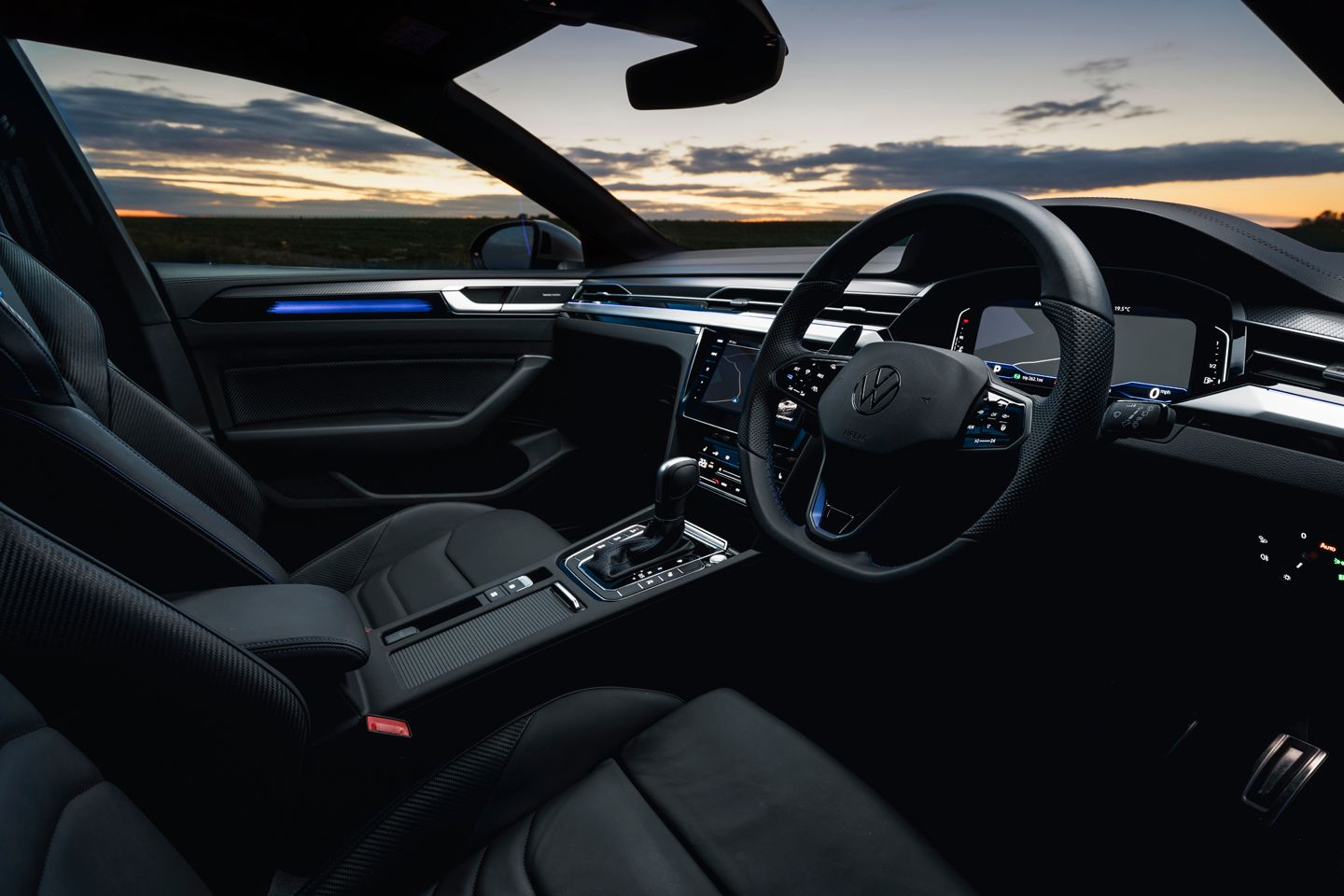
INTERIOR
Although the Arteon didn’t create quite the same sensation of poshness as a 3 or 4 Series BMW, it did have a fair few carbon-y inserts in the cabin. More usefully perhaps it was more spacious than either of the BMWs, with over a metre of legroom in the rear, a best-in-class figure according to Volkswagen. Obviously the headroom in the rear wasn’t quite as generous, and the view past the large integrated front headrests wasn’t great, but both were tolerable. Despite appearances the sleek Shooting Brake actually had marginally more headroom front and rear than the liftback.
The standard upholstery was in something called Art-Velours micro-fleece with R-embroidered front seat backrests, but Nappa leather was a popularly-chosen option. The upper dash and door cards were covered in leatherette. Who knew that was still going? Both front seats had a massage function as well as heating. Unlike various Golfs, Passats and ID.7s the rear seats didn’t come with buttons in the boot compartment to drop them down. The seat bases were fixed, so the load floor with the backs down wasn’t flat.
Oddments spaces weren’t plentiful but the door pockets were big and nicely lined to subdue rattling. You had to like blue as a colour because blue trim highlights were all over the cabin, with blue stitching on the seats, wheel and gear selector and blue ambient lighting, although in fairness you did have 29 other colours to choose from there. Adaptive cruise, lane assist, pano roof, heated steering wheel, wireless CarPlay and Android Auto and Digital Cockpit Pro driver’s display were all standard on the R. Three-zone Climatronic was optional though, as was Travel Assist (partly assisted driving at speeds up to 130mph).
The regulation infotainment was the Golf 7.5 Discover Media system with nav, streaming and internet operating through an 8-inch screen. Discover Pro with a 9.2-inch screen was on the options list at £1,400. An ‘R’ button on the bluely-decorated wheel took you straight to the most sporting Race mode without making you slog your way through the normal menus and there were additional R-exclusive displays for cornering force, power and torque usage, boost pressure, lap times and the like.
Many were pleased to see a proper gearstick in there. The gear selector paddles on the R’s wheel were bigger than on lesser Arteon models. For a hefty £3,600 or so a Technology Pack Plus switched the audio to a 12-speaker 700watt Harmon Kardon system and added 360-degree parking cameras and a head-up display projected by a screen that rose up from its dashtop hidey-hole in an eerie fashion. We think that a wireless charging pad might have been part of this pack too.
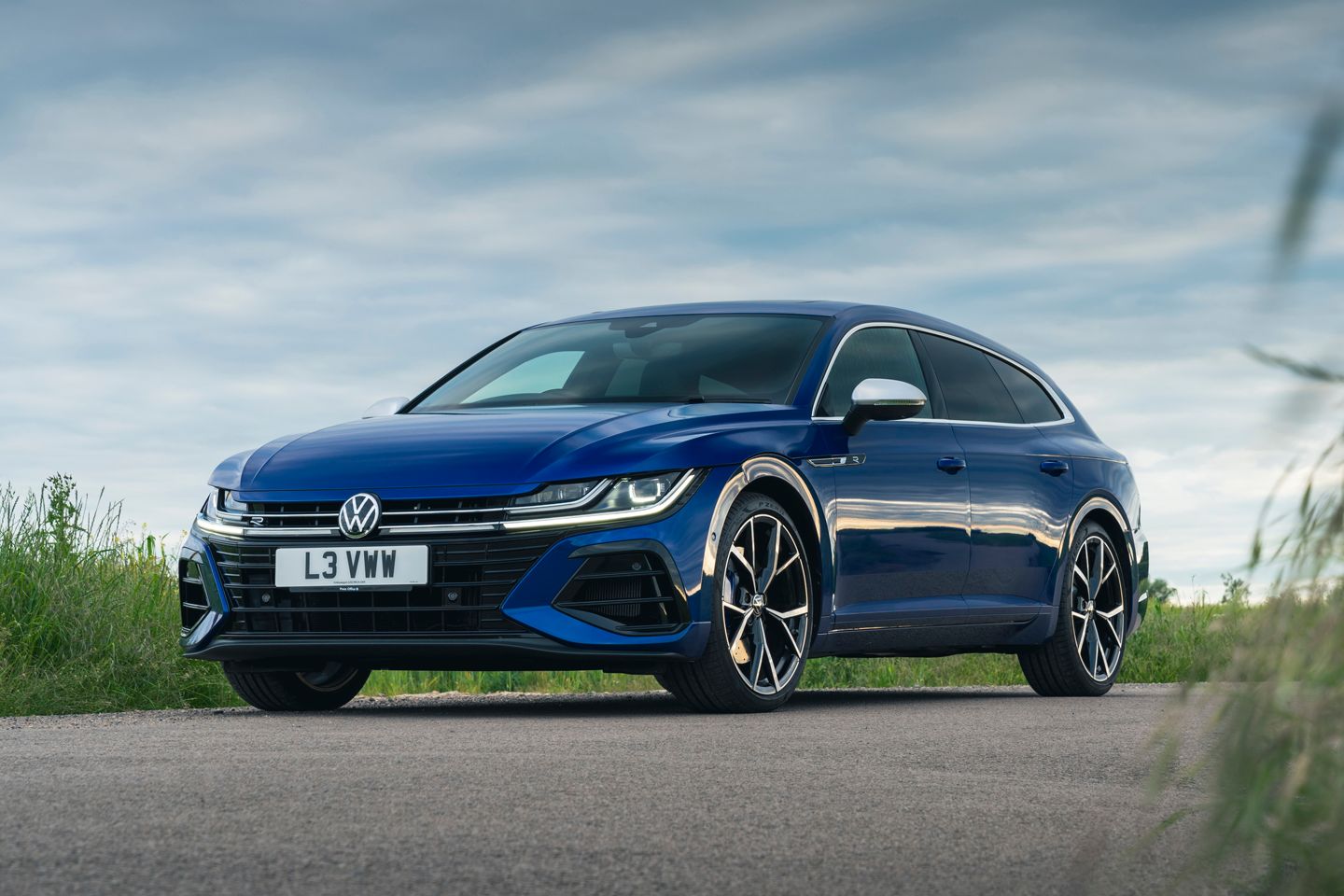
PH VERDICT
The high price that Volkswagen tried to pin onto what some saw as not much more than a posh Passat has made the Arteon R quite an uncommon car in the UK. You’ll see all manner of ‘R Line’ cars in the classifieds, but the number of true Arteon Rs slinking about the UK is probably not much higher than 500 or so. That would qualify it as a proper limited edition car in many manufacturers’ eyes.
It’s interesting in other ways too. It didn’t have the Golf R’s drift mode, but nor did it have the Golf’s anonymous looks. If drifting wasn’t as close to the top of your list of priorities as the ability to transport your family quickly, comfortably, safely and with a modicum of style, and all in the worst conditions that Britain could serve up, the Arteon R was – and is, at today’s used prices – an appealing choice for UK users.
For more demanding drivers the BMW M340i was a better all-round steer, and slightly cheaper than the Arteon R when it was new too, but the VW did most of the things you wanted it to do most of the time. A 2.0 four-engined car may have seemed like a poor deal against something like a 540i X-Drive Touring which was only a few grand more but if you could get past these perception obstacles the Arteon R was a very accomplished cruiser that could also turn its hand to a little innocent fun when the moment presented itself. It was the same weight, as near as makes no difference, as a BMW M2, so it didn’t feel unwieldy. If drifting seems important you can be comforted by owners who reckon they can get their Arteon Rs into maintainable slides without any trouble at all. The robustness of the DQ500 box gave you some tuning headroom if you wanted to go down that route.
The advantage of the R arriving in 2020-21, three years after the main Arteon launch and in time with the release of the updated cars is that many of the teething troubles of the early Arteons like loose sunroof trim panels and failing rear wheel bearings had been sorted by the time it came out. The Arteon was a popular business lease vehicle, and no doubt some higher-ups would have qualified for an R. That should mean good service records on used cars but of course it could also mean less careful use.
In October 2024 Fastbacks with around 50,000 miles started at £27k, and 2023 examples with under 12,000 miles began at £34k. The most affordable R on PH Classifieds was this 2021 Fastback with 27,000 miles at £29,500. Just under £36k would get you this Approved Used 2023 Shooting Brake with just 7,000 miles.
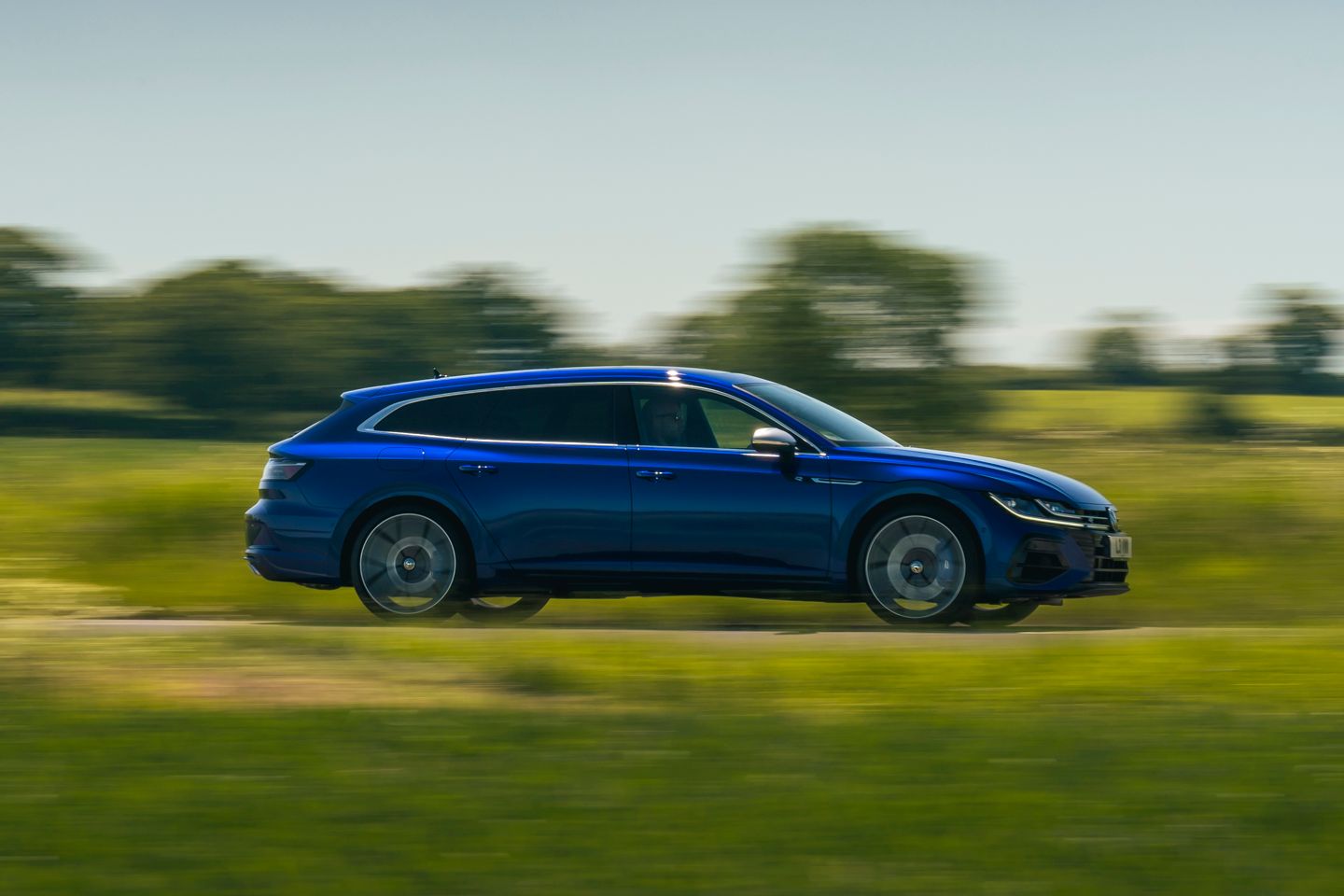
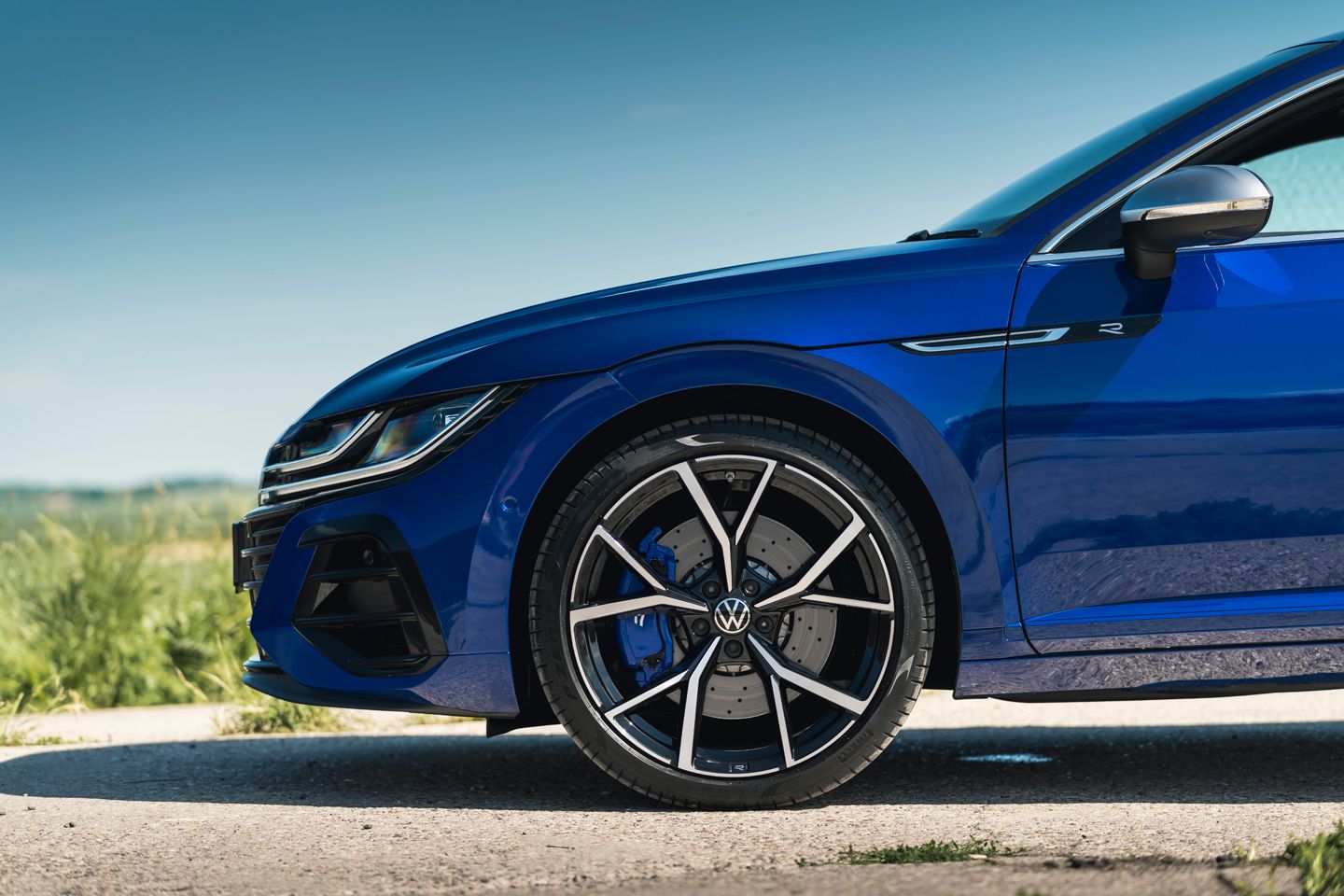
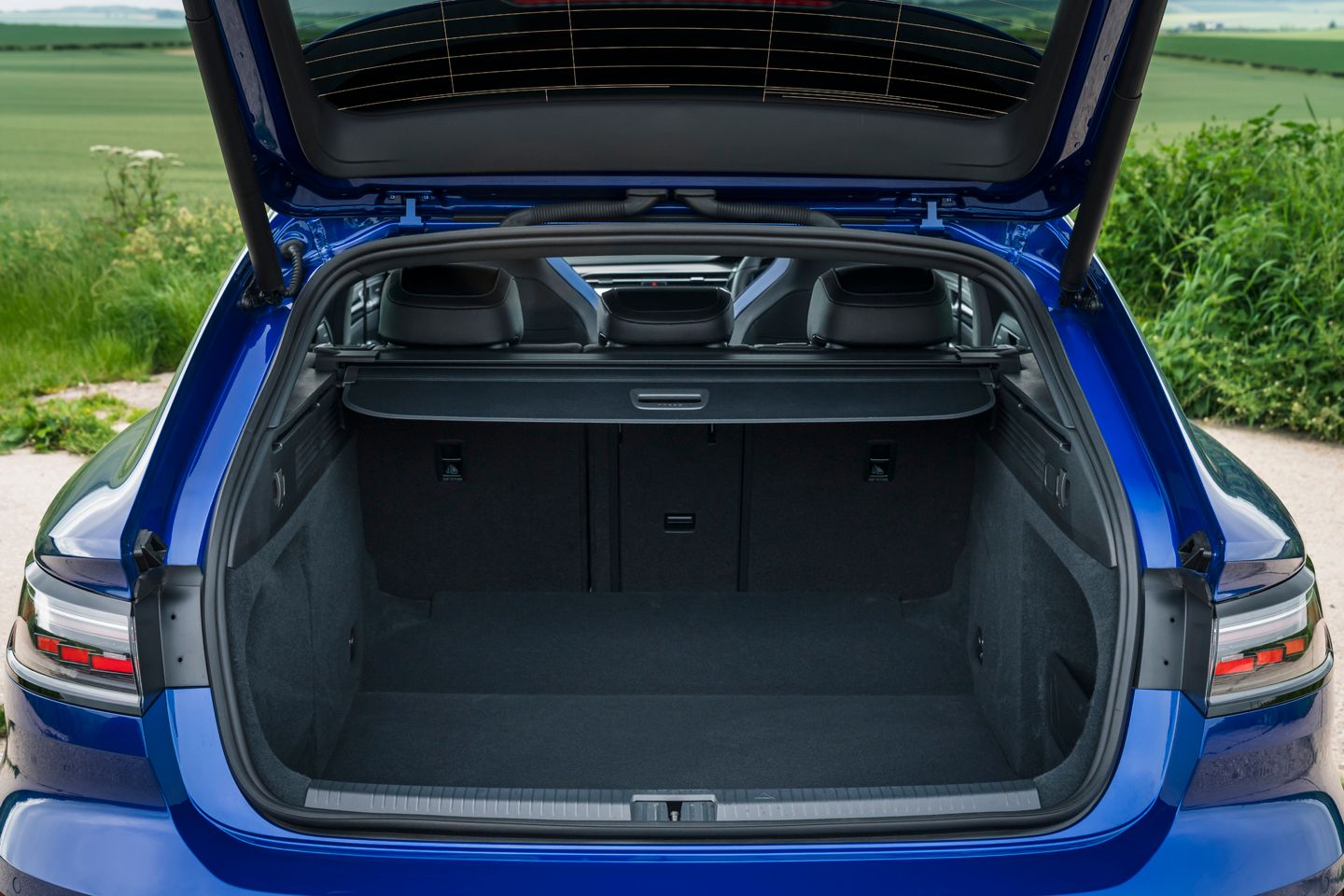
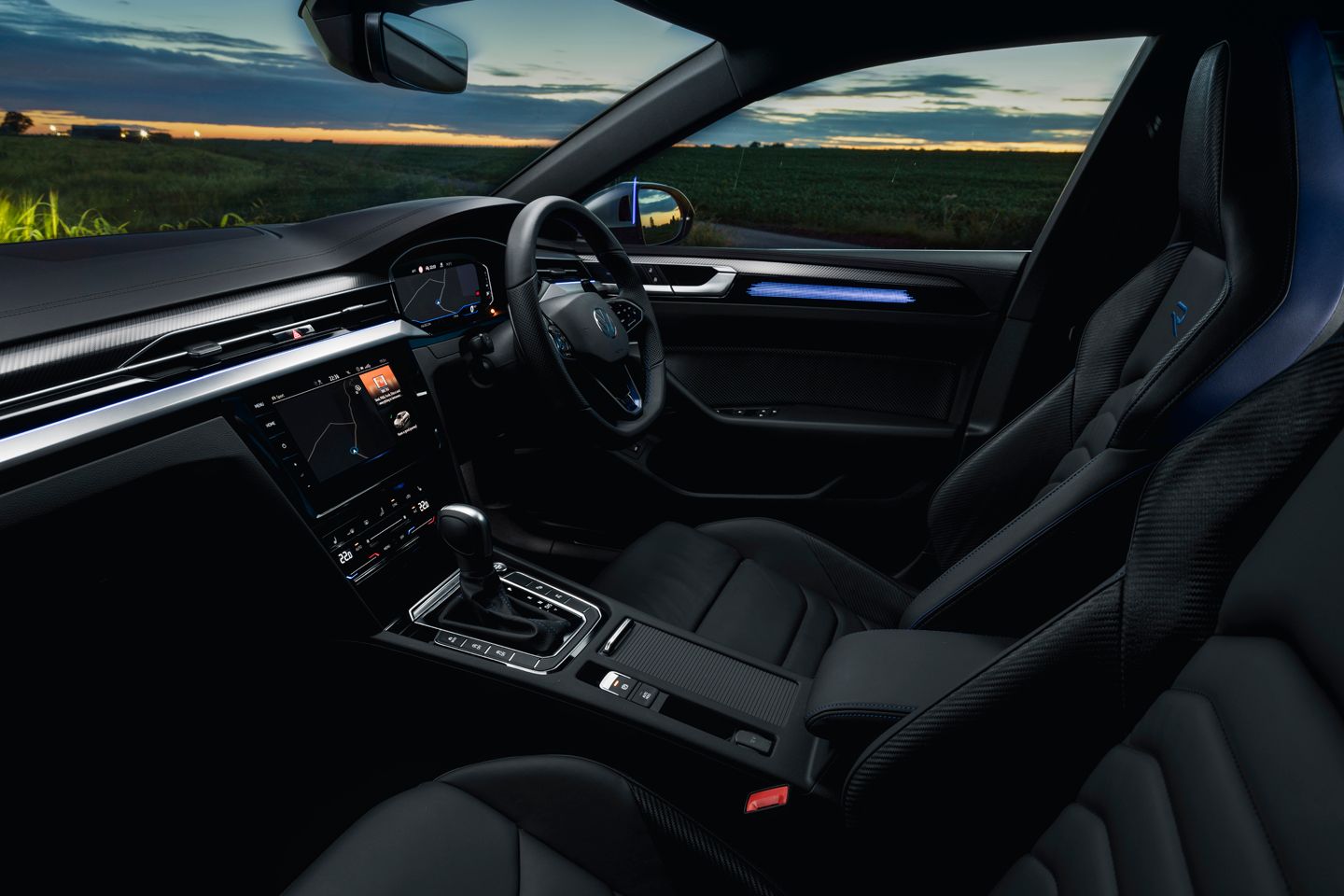
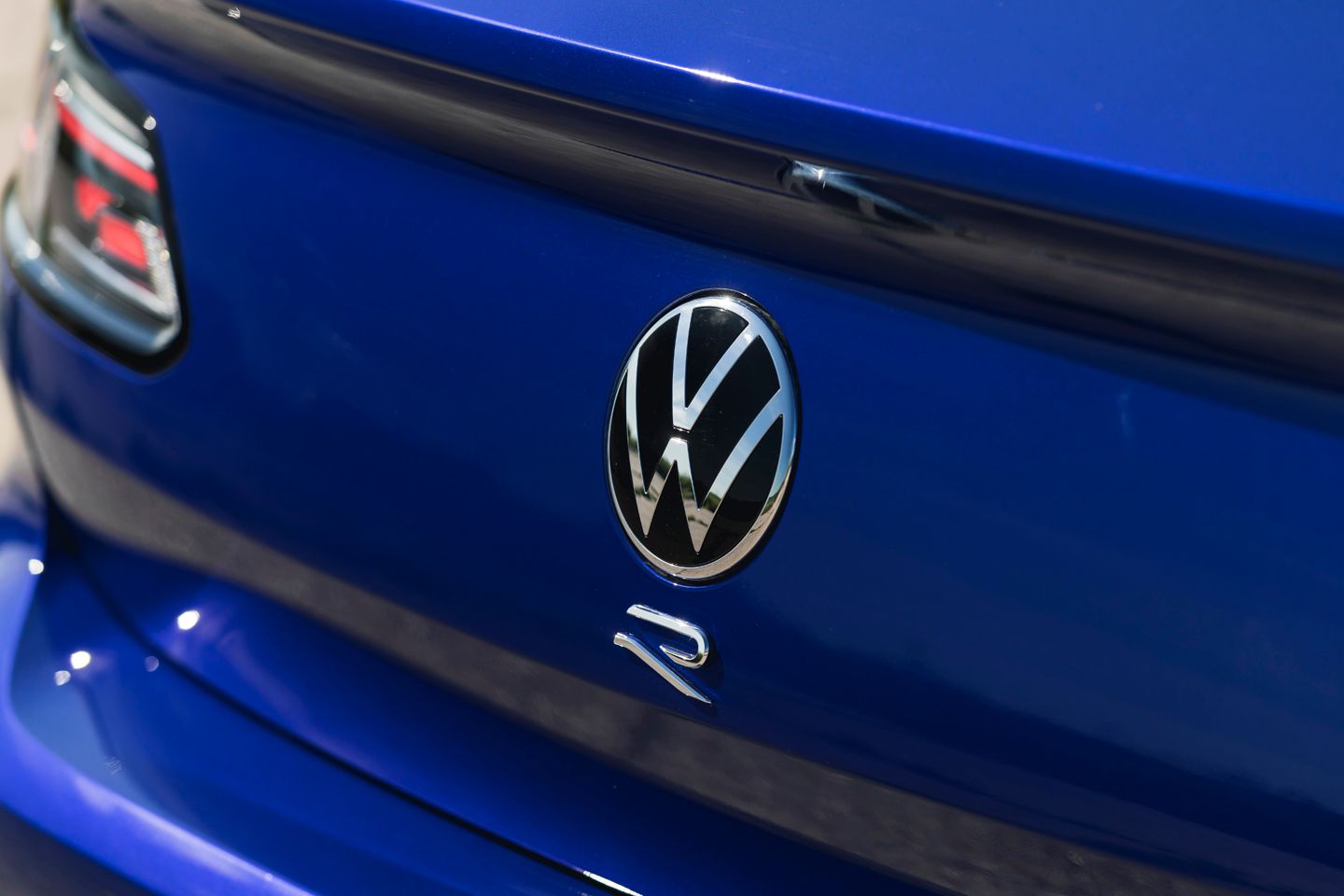

As the former two are pretty rare it may well und up just being the case of picking a decent example of any of them when the time comes. They all seem decent cars with their own strengths. Every now and then I see an example of one of them in the spec I'd like (blue or grey, adaptive dampers, adaptive cruise & pano) and make a mental note.
If I had to choose just one it would be an Arteon R estate in blue with all the toys.
If you drive a recent VW, you'll be very familiar with this message.. and the accompanying bongs.
Standard kit it comes with ACC, 6 speed DSG and the exhaust valves as it’s a 2017 model.
According to how many left it looks like they only sold under 100 a year so not that many about, I was just lucky with the timing for this.
Anyway I’m sure you won’t be disappointed with any of those on your shortlist!
Standard kit it comes with ACC, 6 speed DSG and the exhaust valves as it’s a 2017 model.
According to how many left it looks like they only sold under 100 a year so not that many about, I was just lucky with the timing for this.
Anyway I’m sure you won’t be disappointed with any of those on your shortlist!
I guess in terms of going places (ie on a motorway) the Superb or the Arteon would win (esp the latter with the Acoustic pack). When I got there, the Golf would be better (I've recently hired a Golf 7.5, Cupra Leon and a Focus St Line and, obvs, they're great in the bends).
I guess in terms of going places (ie on a motorway) the Superb or the Arteon would win (esp the latter with the Acoustic pack). When I got there, the Golf would be better (I've recently hired a Golf 7.5, Cupra Leon and a Focus St Line and, obvs, they're great in the bends).
If you drive a recent VW, you'll be very familiar with this message.. and the accompanying bongs.
Taking the MBQ - otherwise transverse-only, I3/4/5 platform - and wrangling in the absolute chest of drawers that is the W12 (transverse? God forbid!); where would you even start?
If you drive a recent VW, you'll be very familiar with this message.. and the accompanying bongs.
Taking the MBQ - otherwise transverse-only, I3/4/5 platform - and wrangling in the absolute chest of drawers that is the W12 (transverse? God forbid!); where would you even start?
I’d be happy if they’d built a 5 cylinder model.
Shame VW couldn’t bring some of this design magic to the inoffensive but forgettable ID range.
In comparison the Tech Pack is good value. The HK sound is significantly better, the heads up works well including with Carplay (Even if it is a bit basic) and the top down view is good.
Also the common issue with broken Travel Assist wasn't mentioned. Sometime it can be fixed with a steering wheel modification but in a lot of cases it requires a complete new steering wheel. VW went though so many of these steering wheels there was a 9 month wait for the part at one point.
Agree with earlier comment on the Touareg.
Gassing Station | General Gassing | Top of Page | What's New | My Stuff




